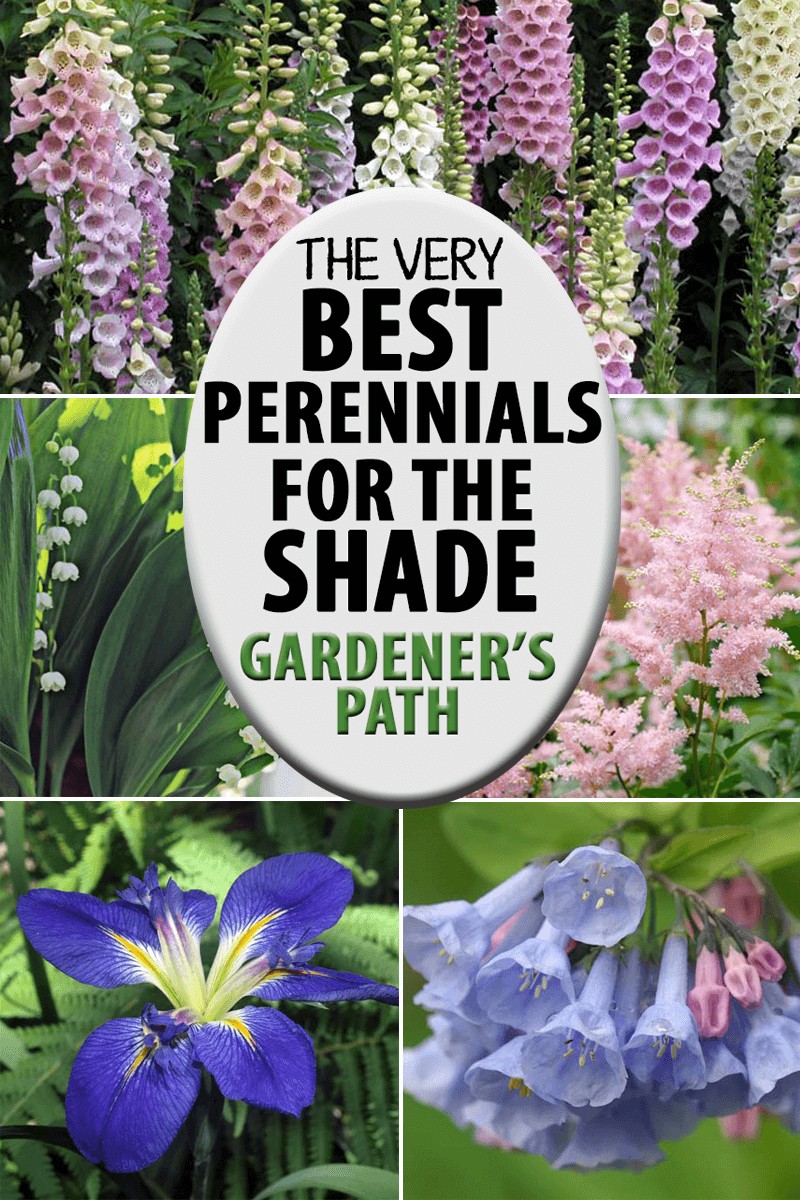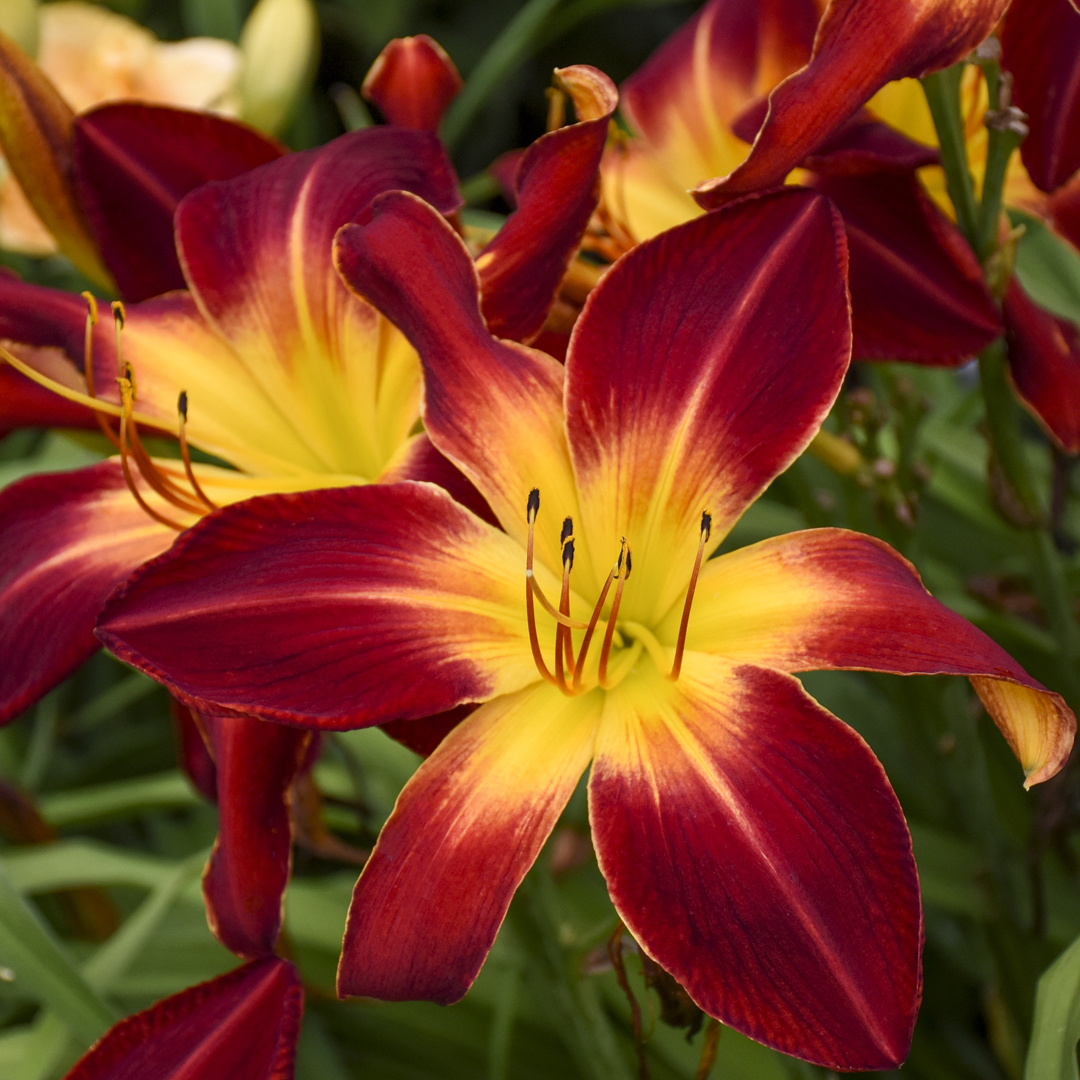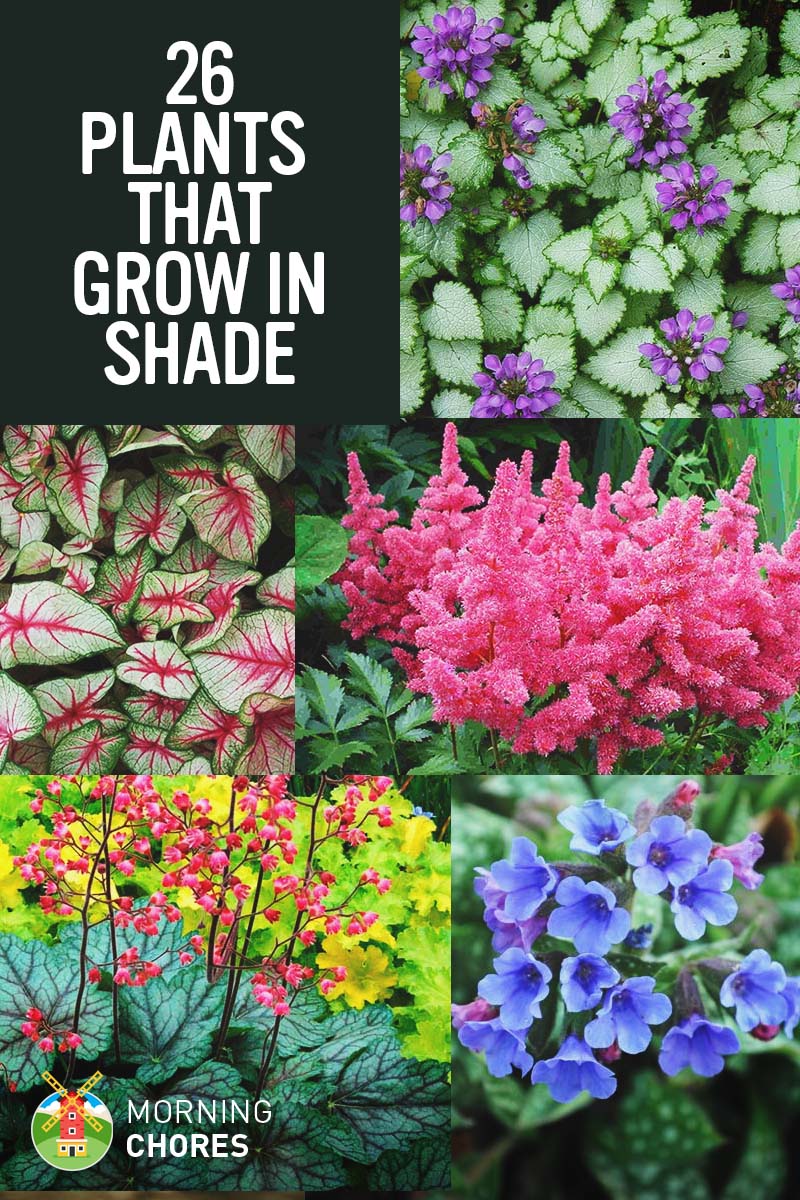What are Perennial Plants and How Do They Work?
Perennial plants are a type of plant that lives for more than two years, typically regrowing new growth from the same roots year after year. These plants have a unique life cycle, where they grow, produce flowers and seeds, and then die back to the ground, only to regrow again the following spring. This process is in contrast to annual plants, which complete their life cycle within a year and typically need to be replanted every year.
Perennial plants offer many benefits to gardeners, including their ability to come back year after year, reducing the need for frequent planting and replanting. They also tend to require less maintenance than annual plants, as they are often more resistant to pests and diseases. Additionally, perennial plants can provide a sense of continuity and stability in the garden, as they return year after year, providing a familiar and comforting presence.
When considering which plants come back every year, it’s essential to understand the different types of perennial plants and their growth habits. Some perennials, such as daylilies and coneflowers, are clump-forming, meaning they grow in a tight clump and do not spread quickly. Others, such as creeping thyme and vinca minor, are spreading perennials, which can quickly cover large areas of the garden.
Perennial plants can be used in a variety of ways in the garden, from creating beautiful borders and beds to providing a naturalized look in meadows and prairies. They can also be used in containers and hanging baskets, adding a touch of elegance and sophistication to any outdoor space.
Some popular perennial plants that come back year after year include black-eyed Susans, bee balm, and coral bells. These plants are relatively low maintenance and can thrive in a variety of conditions, making them perfect for busy gardeners or those new to gardening.
By incorporating perennial plants into your garden, you can create a beautiful and sustainable outdoor space that requires less maintenance and care than a garden filled with annual plants. Whether you’re looking to attract pollinators, add color and texture, or simply enjoy a low-maintenance garden, perennial plants are an excellent choice.
How to Choose the Right Perennial Plants for Your Garden
When selecting perennial plants for your garden, it’s essential to consider several factors to ensure you choose the right plants for your specific climate, soil type, and amount of sunlight. By choosing the right perennials, you can create a beautiful and thriving garden that requires minimal maintenance and care.
One of the most critical factors to consider is your garden’s climate. Different perennials thrive in different temperature ranges, so it’s crucial to choose plants that are suitable for your area’s climate. For example, if you live in a hot and dry climate, you may want to choose perennials like succulents or drought-tolerant plants that can thrive in these conditions.
Soil type is another essential factor to consider when choosing perennial plants. Different plants prefer different types of soil, so it’s crucial to choose plants that thrive in your garden’s soil type. For example, if your garden has heavy clay soil, you may want to choose perennials like hostas or daylilies that prefer moist soil.
Sunlight is also a critical factor to consider when choosing perennial plants. Different plants prefer different amounts of sunlight, so it’s essential to choose plants that thrive in the amount of sunlight your garden receives. For example, if your garden receives full sun, you may want to choose perennials like black-eyed Susans or coneflowers that prefer full sun.
Some popular perennial plants that come back year after year and are suitable for different regions and conditions include:
- Black-eyed Susans (Rudbeckia hirta) – a drought-tolerant perennial that thrives in full sun and well-drained soil.
- Coneflowers (Echinacea spp.) – a perennial that thrives in full sun and well-drained soil, and attracts pollinators like bees and butterflies.
- Daylilies (Hemerocallis spp.) – a perennial that thrives in partial shade and moist soil, and produces showy blooms in the summer.
- Hostas (Hosta spp.) – a perennial that thrives in partial shade and moist soil, and produces beautiful foliage and flowers.
By considering these factors and choosing the right perennial plants for your garden, you can create a beautiful and thriving garden that requires minimal maintenance and care. Whether you’re looking to attract pollinators, add color and texture, or simply enjoy a low-maintenance garden, perennial plants are an excellent choice.
Low-Maintenance Perennials for Busy Gardeners
For busy gardeners, finding the time to maintain a beautiful garden can be a challenge. However, with the right low-maintenance perennial plants, you can enjoy a stunning outdoor space without sacrificing too much time or effort. These plants are perfect for those who want to enjoy the benefits of a garden without the hassle of frequent watering, pruning, and fertilization.
One of the best low-maintenance perennial plants is the sedum. Sedum is a succulent that can thrive in poor soil and requires minimal watering. It’s also a great choice for busy gardeners because it doesn’t need to be pruned or fertilized regularly. Sedum comes in a variety of shapes and sizes, making it a versatile choice for any garden.
Another low-maintenance perennial plant is the coneflower. Coneflowers are drought-tolerant and require minimal watering, making them perfect for busy gardeners. They also don’t need to be pruned or fertilized regularly, and they attract pollinators like bees and butterflies.
Daylilies are also a great choice for busy gardeners. They are low-maintenance and require minimal watering, pruning, and fertilization. They also produce beautiful blooms in the summer, making them a great choice for adding color and texture to your garden.
Hostas are another low-maintenance perennial plant that are perfect for busy gardeners. They prefer shady conditions and require minimal watering, pruning, and fertilization. They also produce beautiful foliage and flowers, making them a great choice for adding texture and interest to your garden.
By incorporating these low-maintenance perennial plants into your garden, you can enjoy a beautiful outdoor space without sacrificing too much time or effort. Whether you’re a busy professional or a busy parent, these plants are perfect for anyone who wants to enjoy the benefits of a garden without the hassle of frequent maintenance.
Some other low-maintenance perennial plants that are perfect for busy gardeners include:
- Black-eyed Susans (Rudbeckia hirta) – a drought-tolerant perennial that requires minimal watering and pruning.
- Yarrow (Achillea millefolium) – a perennial that requires minimal watering and pruning, and produces beautiful white blooms in the summer.
- Coral bells (Heuchera spp.) – a perennial that prefers shady conditions and requires minimal watering, pruning, and fertilization.
By choosing these low-maintenance perennial plants, you can enjoy a beautiful garden that requires minimal upkeep, allowing you to focus on other things that matter to you.
Perennial Plants that Attract Pollinators and Wildlife
Perennial plants are not only beautiful and low-maintenance, but they also play a crucial role in supporting local ecosystems and biodiversity. By incorporating perennial plants that attract pollinators and wildlife into your garden, you can create a haven for beneficial insects and animals, while also enjoying the benefits of a thriving garden.
Pollinators, such as bees, butterflies, and hummingbirds, are essential for the reproduction of many plant species. Without these pollinators, many plants would be unable to produce seeds, and our food supply would be severely impacted. Perennial plants that attract pollinators, such as coneflowers, black-eyed Susans, and bee balm, are perfect for gardens that want to support these important insects.
In addition to pollinators, perennial plants can also attract other wildlife, such as birds and deer. Plants like shrub roses, lavender, and Russian sage are perfect for gardens that want to attract birds, while plants like hostas and coral bells are great for gardens that want to attract deer.
Some popular perennial plants that attract pollinators and wildlife include:
- Coneflowers (Echinacea spp.) – a perennial that attracts pollinators like bees and butterflies, and produces beautiful purple, pink, or white blooms.
- Black-eyed Susans (Rudbeckia hirta) – a perennial that attracts pollinators like bees and butterflies, and produces bright yellow blooms with dark centers.
- Bee balm (Monarda didyma) – a perennial that attracts pollinators like hummingbirds and butterflies, and produces red, pink, or purple blooms.
- Shrub roses (Rosa spp.) – a perennial that attracts birds and produces beautiful blooms in a variety of colors.
- Lavender (Lavandula spp.) – a perennial that attracts birds and produces beautiful purple blooms.
By incorporating these perennial plants into your garden, you can create a haven for beneficial insects and animals, while also enjoying the benefits of a thriving garden. Whether you’re looking to attract pollinators, birds, or deer, there are many perennial plants that can help you achieve your goals.
When choosing perennial plants that attract pollinators and wildlife, be sure to consider the specific needs of the plants, as well as the needs of the animals you want to attract. By choosing plants that are native to your region and that provide the right type of food and shelter, you can create a garden that is both beautiful and beneficial to the environment.
Perennial Plants for Shade and Sun
Perennial plants can thrive in a variety of conditions, including shade and sun. While some perennials prefer full sun, others can tolerate partial shade or even full shade. By choosing the right perennial plants for your garden’s specific conditions, you can create a beautiful and thriving garden that requires minimal maintenance.
For gardens that receive full sun, perennial plants like black-eyed Susans, coneflowers, and bee balm are perfect. These plants are drought-tolerant and can thrive in temperatures up to 90°F (32°C). They also produce beautiful blooms that attract pollinators and add color to your garden.
For gardens that receive partial shade, perennial plants like hostas, coral bells, and astilbe are great options. These plants prefer temperatures between 60°F (15°C) and 80°F (27°C) and can tolerate some direct sunlight. They also produce beautiful foliage and flowers that add texture and interest to your garden.
For gardens that receive full shade, perennial plants like ferns, impatiens, and coleus are perfect. These plants prefer temperatures between 50°F (10°C) and 70°F (21°C) and can thrive in low-light conditions. They also produce beautiful foliage and flowers that add color and texture to your garden.
Some popular perennial plants that can tolerate extreme temperatures and weather conditions include:
- Sedum (Sedum spp.) – a perennial that can tolerate temperatures up to 100°F (38°C) and drought conditions.
- Yarrow (Achillea millefolium) – a perennial that can tolerate temperatures up to 90°F (32°C) and drought conditions.
- Coneflower (Echinacea spp.) – a perennial that can tolerate temperatures up to 90°F (32°C) and drought conditions.
- Hosta (Hosta spp.) – a perennial that can tolerate temperatures between 40°F (4°C) and 80°F (27°C) and partial shade.
By choosing the right perennial plants for your garden’s specific conditions, you can create a beautiful and thriving garden that requires minimal maintenance. Whether you have a garden that receives full sun, partial shade, or full shade, there are many perennial plants that can thrive in your outdoor space.
Perennial Plants for Cut Flower Arrangements
Perennial plants are a great choice for cut flower arrangements, as they provide a constant supply of fresh flowers throughout the growing season. By incorporating perennial plants into your garden, you can enjoy a beautiful and thriving garden that also provides a bounty of fresh flowers for arrangements.
Some popular perennial plants that are perfect for cut flower arrangements include:
- Peonies (Paeonia spp.) – a perennial that produces large, showy blooms in the spring.
- Hydrangeas (Hydrangea spp.) – a perennial that produces big, round blooms in the summer.
- Daylilies (Hemerocallis spp.) – a perennial that produces showy, trumpet-shaped blooms in the summer.
- Coneflowers (Echinacea spp.) – a perennial that produces large, showy blooms in the summer.
- Black-eyed Susans (Rudbeckia hirta) – a perennial that produces bright yellow blooms with dark centers in the summer.
These perennial plants are perfect for cut flower arrangements because they have long-lasting stems and produce a constant supply of fresh flowers throughout the growing season. By incorporating these plants into your garden, you can enjoy a beautiful and thriving garden that also provides a bounty of fresh flowers for arrangements.
In addition to the plants listed above, there are many other perennial plants that are perfect for cut flower arrangements. Some other options include:
- Salvias (Salvia spp.) – a perennial that produces tall, upright blooms in the summer.
- Yarrow (Achillea millefolium) – a perennial that produces fern-like foliage and produces white or yellow blooms in the summer.
- Coral bells (Heuchera spp.) – a perennial that produces maple-like foliage and produces airy, bell-shaped blooms in the summer.
By incorporating these perennial plants into your garden, you can enjoy a beautiful and thriving garden that also provides a bounty of fresh flowers for arrangements. Whether you’re looking to create a simple bouquet or a more elaborate arrangement, perennial plants are a great choice.
In addition to their beauty and versatility, perennial plants are also a great choice for cut flower arrangements because they are low-maintenance and easy to care for. By choosing perennial plants that are suitable for your climate and soil type, you can enjoy a beautiful and thriving garden that requires minimal maintenance and care.
Perennial Plants for Edible Gardens
Perennial plants are a great addition to edible gardens, providing a bounty of fresh fruits, vegetables, and herbs year after year. By incorporating perennial plants into your edible garden, you can enjoy a constant supply of fresh produce, while also reducing the need for frequent planting and maintenance.
Some popular perennial plants for edible gardens include:
- Asparagus (Asparagus officinalis) – a perennial that produces tender shoots in the spring.
- Rhubarb (Rheum rhabarbarum) – a perennial that produces tart stalks in the spring.
- Strawberries (Fragaria x ananassa) – a perennial that produces sweet fruit in the spring and summer.
- Blueberries (Vaccinium corymbosum) – a perennial that produces sweet fruit in the summer.
- Raspberries (Rubus idaeus) – a perennial that produces sweet fruit in the summer.
These perennial plants are perfect for edible gardens because they are easy to care for and provide a constant supply of fresh produce. By incorporating these plants into your garden, you can enjoy a bountiful harvest year after year, while also reducing the need for frequent planting and maintenance.
In addition to the plants listed above, there are many other perennial plants that are perfect for edible gardens. Some other options include:
- Herbs like mint, oregano, and thyme – which can be used to add flavor to a variety of dishes.
- Vegetables like artichokes, garlic, and onions – which can be used in a variety of recipes.
- Fruits like grapes, kiwis, and pomegranates – which can be eaten fresh or used in a variety of recipes.
By incorporating these perennial plants into your edible garden, you can enjoy a constant supply of fresh produce, while also reducing the need for frequent planting and maintenance. Whether you’re looking to add some fresh herbs to your cooking, or enjoy a bountiful harvest of fruits and vegetables, perennial plants are a great choice.
In addition to their edible benefits, perennial plants also provide a number of other benefits for edible gardens. They can help to attract pollinators, improve soil health, and provide a natural source of pest control. By incorporating perennial plants into your edible garden, you can create a sustainable and thriving garden that provides a bounty of fresh produce year after year.
Common Mistakes to Avoid When Planting Perennials
When planting perennials, it’s essential to avoid common mistakes that can affect their growth and longevity. By understanding these mistakes, you can ensure that your perennials thrive and provide years of beauty and enjoyment.
One of the most common mistakes to avoid is planting perennials too deeply. This can cause the crown of the plant to rot, leading to poor growth or even death. To avoid this, make sure to plant perennials at the same depth as they were in the pot, and water well after planting.
Another mistake to avoid is not providing enough space for perennials to grow. Perennials need room to spread out and grow, so make sure to plant them far enough apart to allow for proper growth. A general rule of thumb is to plant perennials at least 12-18 inches apart.
Neglecting to water and fertilize perennials is another common mistake. Perennials need regular watering and fertilization to thrive, especially during their first year of growth. Make sure to water perennials regularly, and fertilize them in the spring and summer months.
Not deadheading perennials is another mistake to avoid. Deadheading involves removing spent flowers to encourage more blooms and prevent seed production. This can help to promote healthy growth and encourage more blooms.
Some other common mistakes to avoid when planting perennials include:
- Not preparing the soil properly before planting. This can lead to poor growth and drainage issues.
- Not providing enough sunlight for perennials. Most perennials need at least 6 hours of direct sunlight per day to thrive.
- Not mulching around perennials. Mulch can help to retain moisture, suppress weeds, and regulate soil temperature.
By avoiding these common mistakes, you can ensure that your perennials thrive and provide years of beauty and enjoyment. Remember to plant perennials at the right depth, provide enough space for growth, water and fertilize regularly, and deadhead spent flowers.
Proper care and maintenance are essential for perennial plants to thrive. By following these tips and avoiding common mistakes, you can enjoy a beautiful and thriving garden that provides years of enjoyment.









